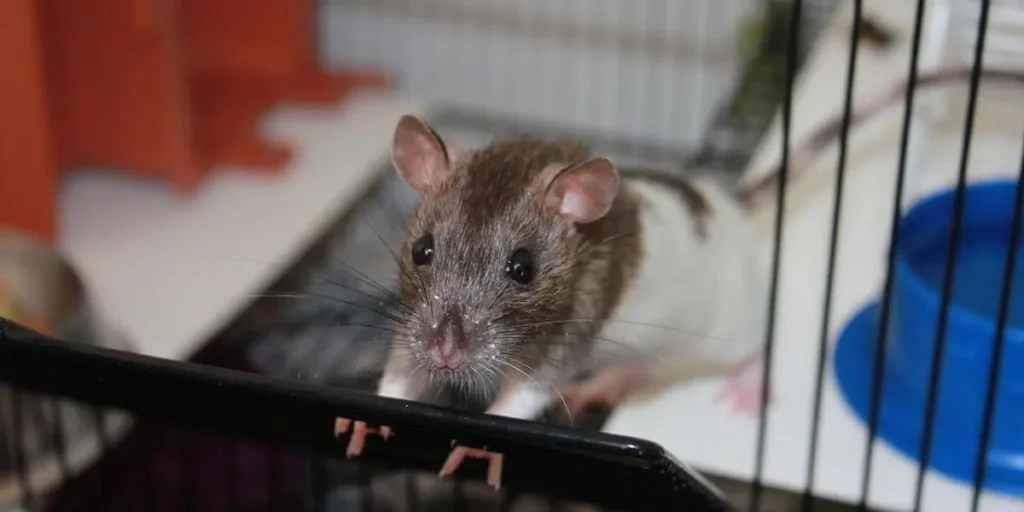Table of contents
Which Cage?
The Bar Cage
This is the ideal cage, provided its volume is large enough (minimum 0.05 m³). The bar spacing must be under 2 cm to prevent escapes, especially for smaller females. It should have a large door for easy cleaning and maintenance.
The Bird Aviary
For multiple rats, a large space is required – an aviary is ideal. It can accommodate several levels, maximizing vertical space. However, metal cages can rust over time, and cleaning can be more demanding.
The Plexiglass Cage
Avoid this type. Lack of bars prevents climbing, and poor ventilation can damage your rat’s respiratory system. Ammonia from urine accumulates faster, making it suitable only for temporary isolation during illness.
A Homemade Cage
If you enjoy DIY, you can build a custom cage tailored to your preferences. Avoid wood, which deteriorates quickly when in contact with urine. Design removable levels for easier cleaning.
Cage Dimensions
Rats are naturally active and curious. Their cage should be at least 0.05 m³ in volume and include structures that encourage climbing, exploring, and exercise.
Bedding
Avoid wood shavings, which release toxic dust and damage the respiratory system. Opt for hemp, flax, or cardboard bedding. Corn or plant-based litter can harm your rat’s paws.
Accessories
Rats are intelligent animals that need mental and physical stimulation. Without enrichment, they may gnaw the bars. Provide various accessories to keep them busy and comfortable.
Essentials
- A sturdy food bowl that won’t tip over.
- A water bottle for hygiene and easy access.
- A small house for resting, hiding, and eating safely.
Extras
- Hideouts and tunnels made of plastic (replace regularly as they’ll be chewed).
- A hammock for relaxation – rats love them.
- Branches from hazel, apple, or cherry trees for gnawing.
- A solid wheel – some rats enjoy running, others won’t use it.
Price
The cost depends on the cage’s size and material. New large cages range from $85 to $215. Used cages can be found for $55 or less. It’s an essential investment in your rat’s welfare.
A good rat cage should:
- Be spacious (minimum 0.05 m³).
- Include multiple levels and accessories.
- Be made of metal bars (avoid plexiglass or aquariums).
- Use hemp or flax bedding for safety and comfort.
- Sources:
- American Society for the Prevention of Cruelty to Animals
- American Veterinary Medical Association

